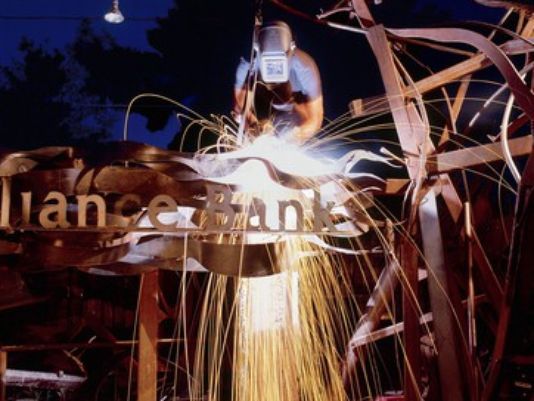
The economy grew solidly for a third straight quarter late last year on strong consumer spending and business investment, but the performance fell short of analysts’ estimates.
The nation’s gross domestic product — the value of all goods and services produced in the U.S. — increased at a seasonally adjusted annual rate of 2.6%, following advances of 3.1% and 3.2% the previous two quarters, the Commerce Department said Friday. Economists had expected 3% growth. It would have marked the first time the economy has grown by 3% or more for three straight quarters since the second half of 2004 and early 2005.
The economy expanded at a 2.3% rate for all of 2017 after a disappointing 1.5% increase the prior year. That modestly exceeds the tepid 2.2% average during the 8 ½ year-old recovery from the Great Recession of 2007-09.
Perhaps most encouraging is that the economy is showing resilience. Growth topped 3% in the third quarter despite brutal hurricanes in Texas and Florida. Rebuilding efforts in those areas were expected to bolster activity late last year.
President Trump has promised 3% annual growth under the Republican tax cuts, but that may be a tougher challenge. The tax overhaul is expected to boost growth modestly in 2018, but the economy has started off recent years meekly, a trend that many economists attribute to measurement problems. That pattern could persist in the current quarter. And some analysts expect rising interest rates to temper activity late this year.
“The economy is doing quite well,” says Joel Naroff of Naroff Economic Advisors. “The idea that we can get significantly above (2.6% growth) is questionable.”
Any president, of course, is just one of many forces affecting the economy. Strong global growth and a rebound in energy prices were already propelling the U.S. economy when Trump took office, though his agenda of cutting corporate taxes and regulations has boosted business confidence and stocks. At the same time, his moves to restrict trade and immigration ultimately could hurt growth, economists have said.
In the fourth quarter, consumer spending increased a healthy 3.8%, up from 2.2% in the third quarter. Consumers are benefiting from sturdy job and income growth and record stock prices, and the holiday sales season was the best in 12 years. The tax cuts could further stoke consumption this year.

Business investment rose 6.8%, its fourth straight solid showing. Businesses have stepped up their outlays because of a revival in oil drilling and a resurgent global economy. Equipment outlays jumped 11.4% as companies struggling to find workers amid a 4.1% unemployment rate purchased more labor-saving technology.
Residential investment, largely housing starts, surged 11.5% after two months of declines. Builders are putting up more single-family homes in response to a long-term housing shortage.
Government spending increased 3% on a robust 6% rise in defense outlays and solid increases in federal, as well as state and local spending.
But business stockpiling subtracted nearly seven-tenths of a percentage point from growth after adding to economic gains the previous quarter.
And while exports increased 6.9%, imports leaped 13.9%, partly because of the strong consumer purchases. That imbalance served as a drag on growth overall.
This was the government’s first estimate of economic growth in the fourth quarter. It will publish two more revised estimates in coming weeks.

